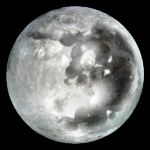Not a member of Pastebin yet?
Sign Up,
it unlocks many cool features!
- There are 6 kinds of habitable planet in Distant Worlds, separated into 3 tiers, and 2 types.
- The two types are just "wet" and "dry" planets.
- The tiers are based on the level of colony research you need to unlock the ability to colonise them.
- Tier 1 planets are Continental (dry) and Marsh (wet).
- They are the rarest type of planets, but they will always be habitable and will have a quality of at least 70%. No exceptions.
- Tier 2 planets are Desert (dry) and Ocean (wet).
- They are somewhat common, but tend to have much lower quality and will often be only marginally habitable.
- Tier 3 planets are Volcanic (dry) and Ice (wet).
- They are quite common, but will frequently be of very low quality.
- Each race has a preference for a single type of planet which they can colonise without any research, and upon which they recieve a 10% bouns to the maximum population.
- Each planet type has it's own fors and againsts as a starting type:
- Tier 1
- Being able to instantly colonise the highest quality planets right from the start is quite a decent boost, IF you can find one.
- But they will be the only type of planets you can colonise for quite a while as tier 2 and 3 research is quite expensive.
- Tier 2 and 3
- Your starting planet type is moderately common and it will not be too difficult to find one you can expand to, but you might struggle to find one of a decent quality.
- This also means that if you are using colony range limits you will be able to use your native planet type to "leapfrog" into a new area by deliberately colonising a low quality world - something that a tier 1 native race cannot do without a lot of research.
- However, since tier 1 research is quite cheap you will quickly have 2 other types of planet available to you.
- You will notice, especially on the higher difficulty levels that some AI empires will snowball more frequently than others.
- And the ones that do so more often tend to be those native to tier 2 and 3 worlds.
- The ability to expand by colonising common but marginal worlds without research is quite a decent advantage.
- Eg: The Dhayut are one of the more frequent races that can runaway if you're not in a position to stop them.
- What the hell is quality anyway?
- It's a big damn deal, that's what.
- The quality of a planet not only limits how much population it can support, but it also determines how much income you get from that population.
- Anything less than 50% quality gets ZERO income. Ever.
- There are times when you actually want to colonise such a dump, for instance if you want to secure a ruin that boosts your empire, or a resource you can't afford to lose, or maybe you just want to open up new territory to expand into.
- Whatever you colonised it for, just remember: You are paying for that rock forever. You might be able to recoup some costs by building a port on it, but unless it's got a super luxury (eg: korrabian spice) I very much doubt it.
- 50% or greater quality gets you progressively more population and income as you get closer to 100%
- Each race can achieve a higher population when it's on its own native planet type. Note that researching colonisation of other planet types does not, in itself, entitle you to the native planet bonus for the researched planet types. This bonus is 10%.
- The maximum population for any colony is:
- Max pop = 2.5x[(Planet Size/10000)^2]x[(Planet Quality/100)^2]
- Max pop (native) = 1.1x(2.5x[(Planet Size/10000)^2]x[(Planet Quality/100)^2] )
- The max pop is in billions. Planet size is given in thousands, which is why there is a divisor of 10000 in the formula.
- So if the game gives the planet size as 29.5k, then you have to use 29500 as the planet size.
- The theoretical maximum possible planet population is 44 billion. Assuming maximum planet size (40k), 100% quality, and +10% native bonus.
- There is also a minimum population - on a 0% quality planet, there will be a minimum population of 20 million. It probably won't grow much beyond that mind.
- As you can see, with both quality and size being squares, they have a HUGE effect on the amount of population a planet can hold.
- Bigger is always better.
- Higher quality is always better.
- Back to Guide Index: https://pastebin.com/hubsc3ZS
Add Comment
Please, Sign In to add comment

